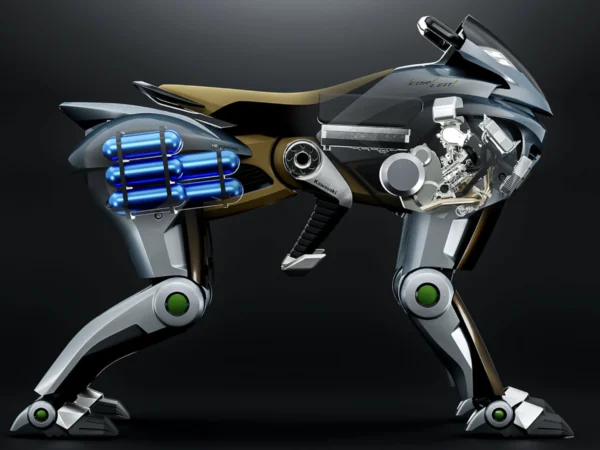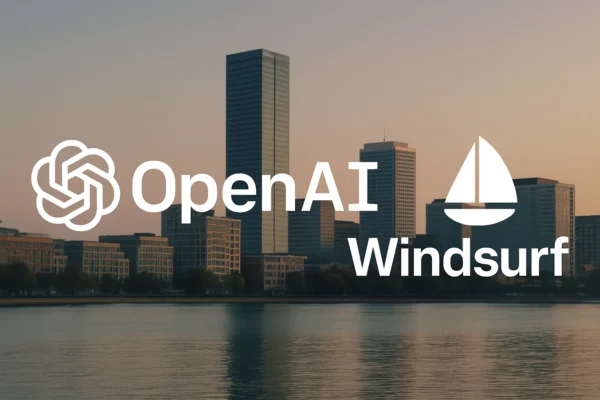
In a significant advancement towards innovative mobility solutions, Kawasaki Heavy Industries has introduced Corleo, a hydrogen-powered robotic quadruped that seamlessly integrates motorcycle-inspired design with cutting-edge robotics technology. This rideable, four-legged apparatus represents not only a feat of engineering but also a forward-thinking initiative aligned towards the global goal of sustainable, AI-enhanced personal transportation systems.
A Vision for the Future of Robotics and Transportation
Corleo exemplifies Kawasaki’s strategic objective to expand its portfolio beyond conventional heavy industries and motorcycle manufacturing. As Japan maintains its position as a leader in robotic innovation, Corleo emerges as a pioneering synthesis of clean energy technology, robotic engineering, and AI-driven locomotion systems.
Distinct from wheeled robotic platforms or humanoid constructs, Corleo replicates the movement patterns of quadrupedal organisms, rendering it well-suited for traversing irregular or challenging terrains. This capability positions it as a potential asset for urban environments and remote operational contexts, such as logistics applications.
Hydrogen-Powered Operation: A Commitment to Sustainability
Central to Corleo’s design is a 150cc hydrogen combustion engine, which generates electrical power to drive its four independently actuated legs rather than directly propelling them mechanically. This application of hydrogen as an energy source underscores Kawasaki’s dedication to clean technologies, offering a viable alternative to lithium-ion battery systems in high-performance or heavy-duty robotic applications.
Hydrogen fuel presents notable advantages for robotic systems, including extended operational durations, rapid refuelling capabilities, and a diminished carbon footprint.
Artificial Intelligence and Intuitive Control Mechanisms
Beyond its power system, Corleo incorporates sophisticated artificial intelligence and dynamic balance control within its operational framework. It employs real-time environmental analysis to ensure stability and adaptability across diverse surfaces, enhancing its functional resilience.
The control interface diverges from traditional mechanisms such as handlebars or pedals, relying instead on the rider’s body movements. By detecting shifts in the rider’s centre of gravity, Corleo adjusts its gait accordingly, emulating the intuitive interaction between a rider and a living horse. This gesture-based control system can potentially redefine human-robot interaction in future transportation paradigms.
Design Language: Motorcycle Heritage and Natural Inspiration
Corleo’s aesthetic and structural design draws heavily from Kawasaki’s renowned motorcycle lineage. The anterior “head” section incorporates a shield-like feature reminiscent of a motorcycle’s headlight assembly, equipped with LED illumination for enhanced visibility. The chassis, constructed from lightweight carbon composites and metal alloys, optimizes durability and manoeuvrability.
Presently a conceptual prototype, Corleo’s visual and functional profile evokes a combination of a mechanized quadruped and a futuristic mobility platform, blending technological precision with organic inspiration.
Market Prospects and Future Applications
At this stage, Corleo remains an experimental prototype, with Kawasaki providing no definitive timeline or pricing for commercial availability. The company has outlined a conceptual roadmap extending to 2050, envisioning a future where such rideable robotic systems could serve diverse purposes, including recreational use in theme parks, urban tourism, industrial inspections, or emergency response operations in disaster-affected regions.
Industry observers suggest that, with sustained development and investment, robotic quadrupeds like Corleo could achieve practical deployment shortly, particularly in regions with established hydrogen infrastructure and advanced AI research capabilities.
A Pioneering Step Toward Sustainable Mobility
Kawasaki’s Corleo is a standing testament to Japan’s enduring leadership in robotic innovation, Kawasaki’s engineering expertise, and the growing emphasis on environmentally conscious technology. While it is not poised to replace conventional motorcycles imminently, Corleo offers a compelling vision of personal mobility for the coming decades.
Whether applied to recreation, logistics, or off-road exploration, rideable robotic systems powered by clean energy are transitioning from speculative fiction to tangible reality, triggering steady adoption in the future.






